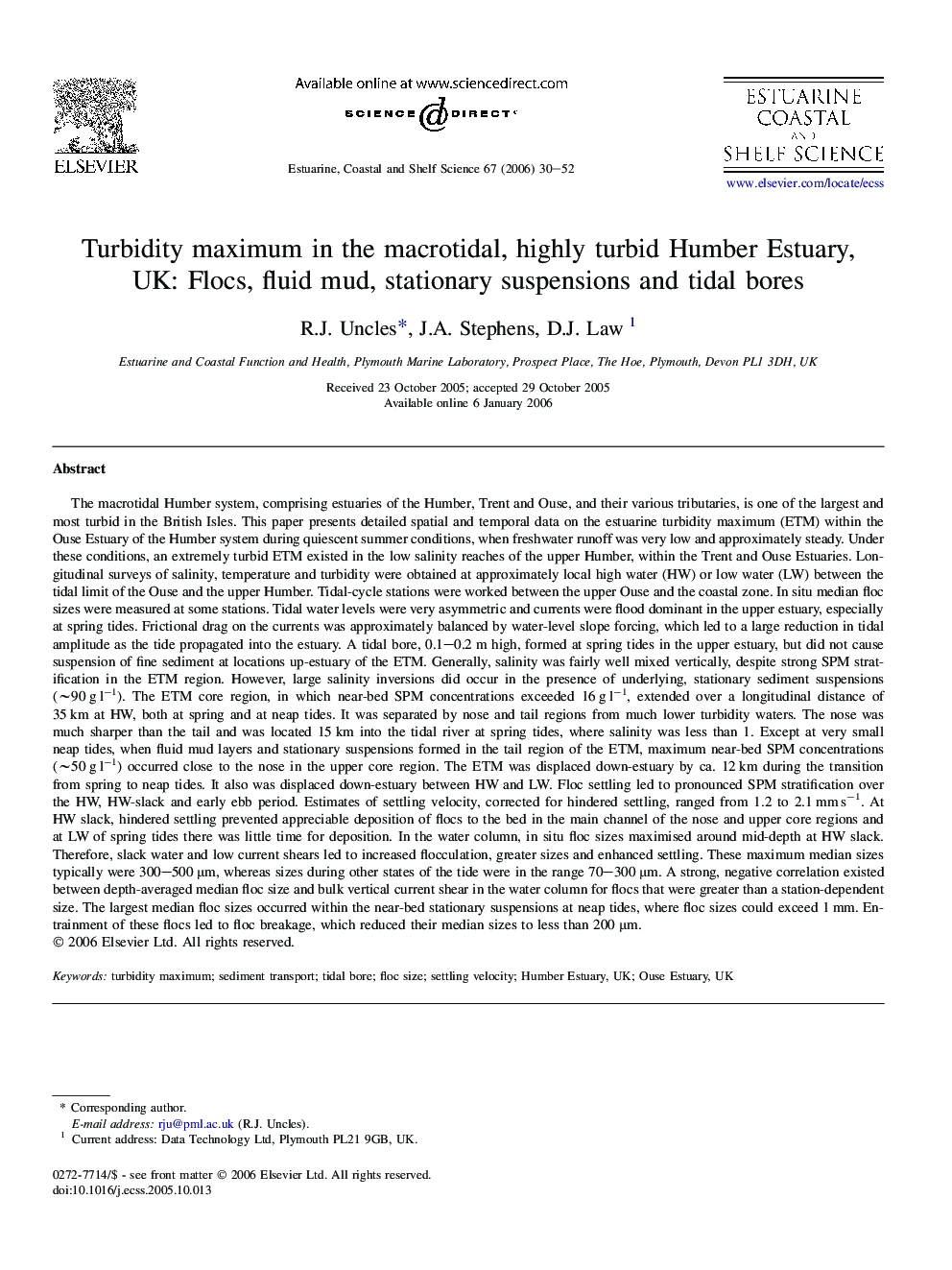| کد مقاله | کد نشریه | سال انتشار | مقاله انگلیسی | نسخه تمام متن |
|---|---|---|---|---|
| 4542318 | 1626714 | 2006 | 23 صفحه PDF | دانلود رایگان |

The macrotidal Humber system, comprising estuaries of the Humber, Trent and Ouse, and their various tributaries, is one of the largest and most turbid in the British Isles. This paper presents detailed spatial and temporal data on the estuarine turbidity maximum (ETM) within the Ouse Estuary of the Humber system during quiescent summer conditions, when freshwater runoff was very low and approximately steady. Under these conditions, an extremely turbid ETM existed in the low salinity reaches of the upper Humber, within the Trent and Ouse Estuaries. Longitudinal surveys of salinity, temperature and turbidity were obtained at approximately local high water (HW) or low water (LW) between the tidal limit of the Ouse and the upper Humber. Tidal-cycle stations were worked between the upper Ouse and the coastal zone. In situ median floc sizes were measured at some stations. Tidal water levels were very asymmetric and currents were flood dominant in the upper estuary, especially at spring tides. Frictional drag on the currents was approximately balanced by water-level slope forcing, which led to a large reduction in tidal amplitude as the tide propagated into the estuary. A tidal bore, 0.1–0.2 m high, formed at spring tides in the upper estuary, but did not cause suspension of fine sediment at locations up-estuary of the ETM. Generally, salinity was fairly well mixed vertically, despite strong SPM stratification in the ETM region. However, large salinity inversions did occur in the presence of underlying, stationary sediment suspensions (∼90 g l−1). The ETM core region, in which near-bed SPM concentrations exceeded 16 g l−1, extended over a longitudinal distance of 35 km at HW, both at spring and at neap tides. It was separated by nose and tail regions from much lower turbidity waters. The nose was much sharper than the tail and was located 15 km into the tidal river at spring tides, where salinity was less than 1. Except at very small neap tides, when fluid mud layers and stationary suspensions formed in the tail region of the ETM, maximum near-bed SPM concentrations (∼50 g l−1) occurred close to the nose in the upper core region. The ETM was displaced down-estuary by ca. 12 km during the transition from spring to neap tides. It also was displaced down-estuary between HW and LW. Floc settling led to pronounced SPM stratification over the HW, HW-slack and early ebb period. Estimates of settling velocity, corrected for hindered settling, ranged from 1.2 to 2.1 mm s−1. At HW slack, hindered settling prevented appreciable deposition of flocs to the bed in the main channel of the nose and upper core regions and at LW of spring tides there was little time for deposition. In the water column, in situ floc sizes maximised around mid-depth at HW slack. Therefore, slack water and low current shears led to increased flocculation, greater sizes and enhanced settling. These maximum median sizes typically were 300–500 μm, whereas sizes during other states of the tide were in the range 70–300 μm. A strong, negative correlation existed between depth-averaged median floc size and bulk vertical current shear in the water column for flocs that were greater than a station-dependent size. The largest median floc sizes occurred within the near-bed stationary suspensions at neap tides, where floc sizes could exceed 1 mm. Entrainment of these flocs led to floc breakage, which reduced their median sizes to less than 200 μm.
Journal: Estuarine, Coastal and Shelf Science - Volume 67, Issues 1–2, March 2006, Pages 30–52